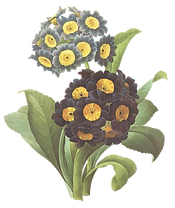On Arkansas Black Apples and Heritage Food
- laurengoff
- Aug 9, 2016
- 2 min read

In Arizona last week, my family and I came across an old orchard from the 20th century (1912, to be exact) in Slide Rock State Park. The hike was short, but I got a few Pokemon, the views were pretty, and I got to see some very old farm equipment.
It seems that the first apple trees he planted were Arkansas Black Apples, an heirloom cultivar native to the Ozarks that is rather rare these days.


Sorry about the poor picture quality.
I am told by older Arkansans that there used to be many orchards of this cultivar in our state, along with many other cultivars that I haven't heard of. Strawberries were apparently also very popular in the many small Arkansan farms. I have heard that people from other countries are surprised at the lack of variety in fruits and vegetables available for purchase. Why is this?
It is easy to see why Frank Pendley, the homesteader who started the Slide Rock orchard, chose Arkansas Blacks -- they are one of the longest-keeping apple cultivars. They are even thought to become sweeter in storage.
Having a variety of cultivars is also beneficial to a farm in general, since different cultivars are vulnerable to different environmental conditions and diseases. Thus, if one crop doesn't do well, another might thrive. It is less likely for the whole orchard to be wiped out.
Yet, it seems only a few crop (or animal) varieties are mass-produced, while others become so rare that you usually only find seeds (or animal specimens) passed down as a family heirloom -- thus, making them heirloom or heritage crops (or breeds). For example, purple hull peas (which the farm raises) aren't found in stores, but sweet peas and green peas are. 99% of all turkeys raised in the U.S. are Broad-Breasted Whites. Almost 96% of the vegetable varieties commercially available in 1903 are now extinct.
It seems the reason for this use of only a few varieties of food by big farms is because these varieties were bred specifically for producing more edible portions, while the other varieties were bred to better survive in their environments -- not a priority for farms where the environment and feed are much the same, and mass production is a priority. This is not necessarily a bad motivation, but it does erase biodiversity.

It's a good thing that nonprofits like Seed Savers Exchange exist, and that small, local farms like us preserve heritage breeds and plants!











Comments